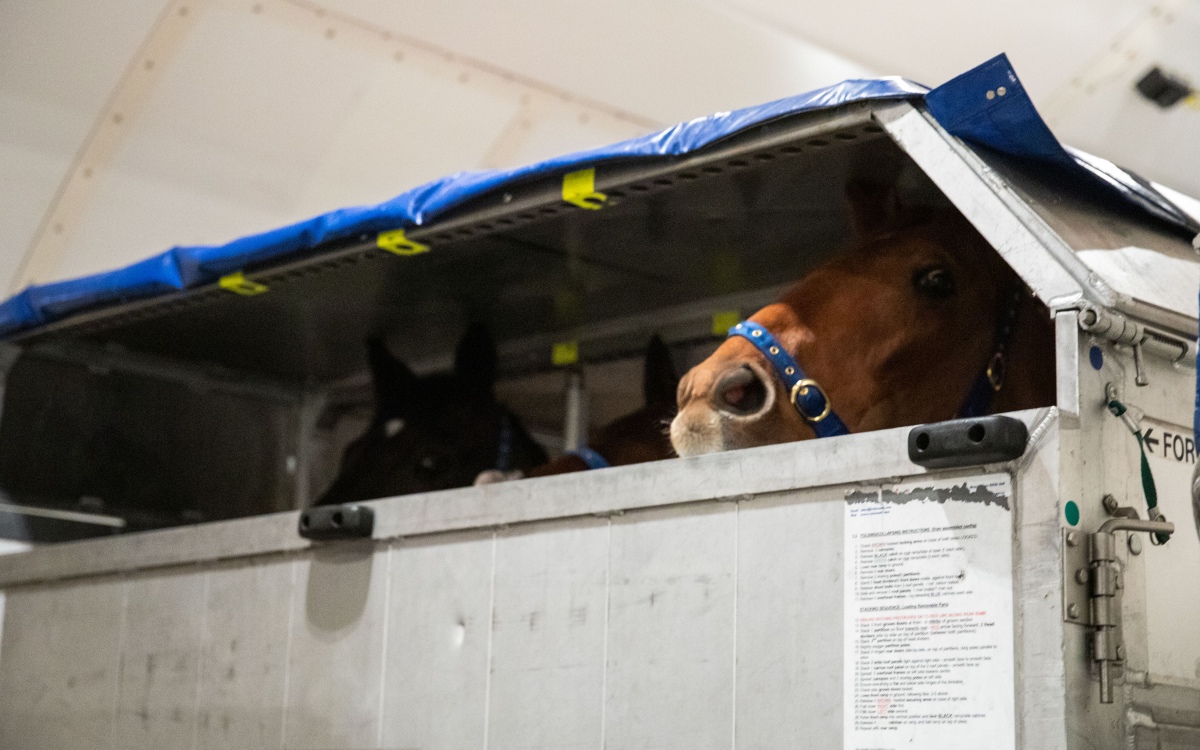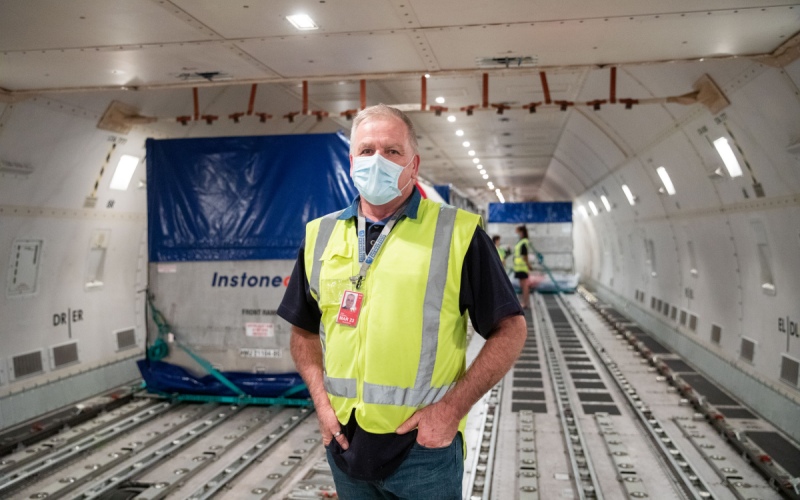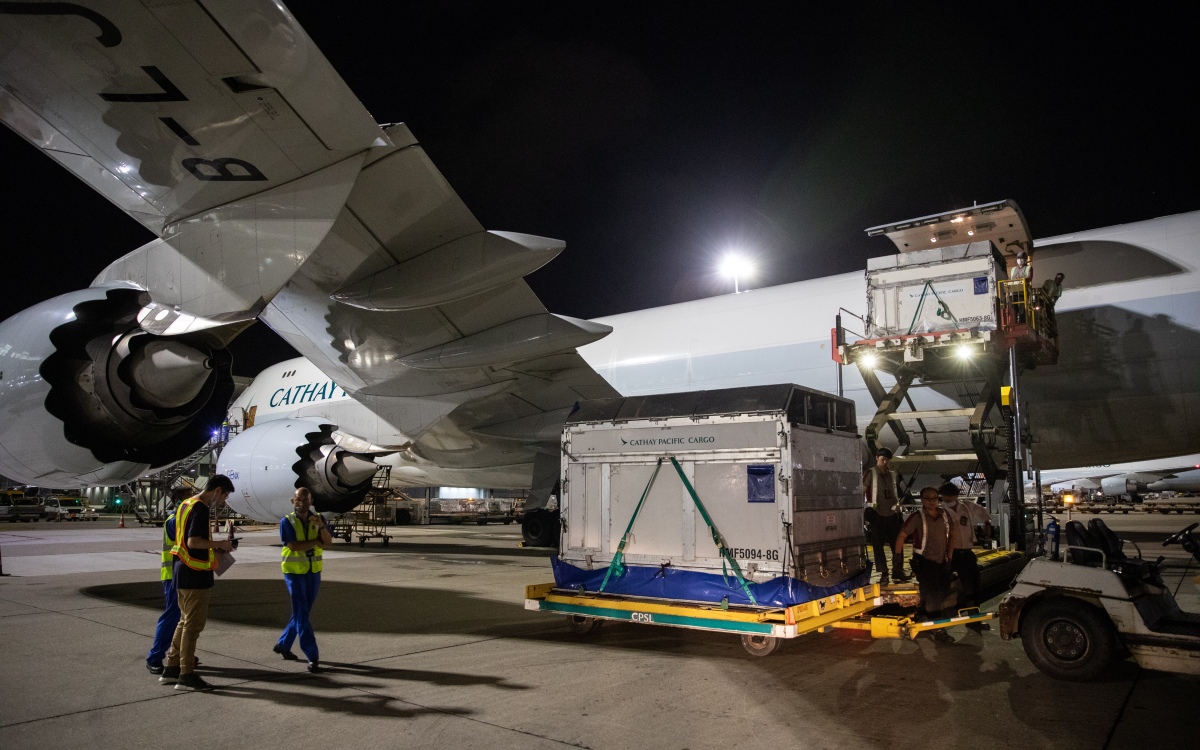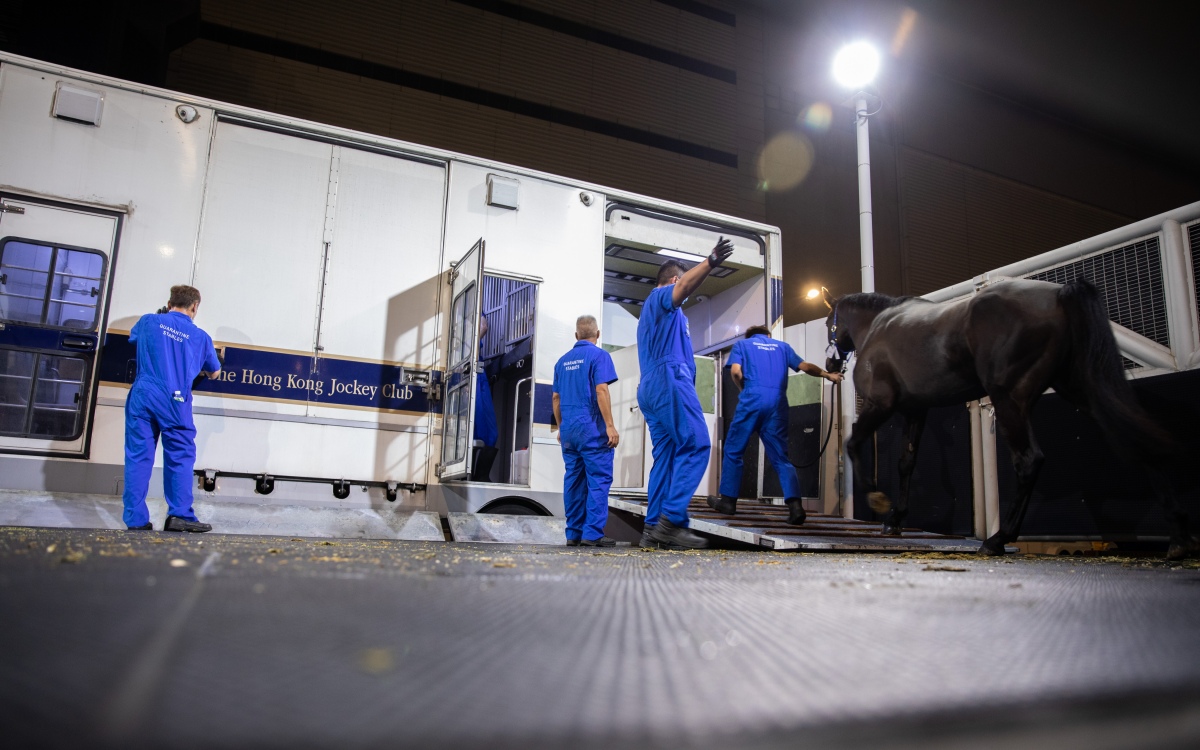Late on a sultry night in early July, the scheduled Cathay Pacific Cargo freighter from Melbourne drew in close to the cargo terminal. On board were 47 racehorses making their way to their new home in Hong Kong: proof positive of the power of the long-term relationship between Cathay Pacific Cargo and the Hong Kong Jockey Club (HKJC).
The shipment comprised 29 horses that had flown in from Auckland, joining 18 more at Melbourne for the onward journey to Hong Kong, where they are set to star in the upcoming race season. Among their number were some very fancied – and very pricy – horses bought by HKJC owners at auction in Australia and New Zealand.

The Cathay teams in Asia Pacific handle two to three shipments per month, and between now and September is the peak period for horse movements, says Candice Lam, who works on the Dual Site Stables Operations and Owners Services team for the HKJC. ‘For each racing season, we will arrange an average of 45 import shipments and 17 export shipments,’ she says.
Over the past few seasons, that meant an average 510 horses coming into Hong Kong and 310 horses leaving every year. The HKJC acts on behalf of the owners for the shipping arrangement, and operates two training facilities; one at Sha Tin, which houses 855 horses, and another facility in Conghua across the border, which stables 390, as of 25 July 2021.
‘In addition, the HKJC holds international races every year (in April and December), and arranges average 16 shipments for around 24 horses coming to Hong Kong for competition – and then it returns them to their home countries,’ adds Lam.
Asia Pacific is the principal market for the HKJC. Around 50 per cent of the horse imports are from Australia, with New Zealand chipping in 30 per cent. The UK makes up the bulk of the remainder. Lam adds: ‘Around 95 per cent of exports will go to New Zealand, with 35 per cent travelling on to Australia after they have completed their quarantine.’
The horses on this particular shipment occupied 16 pallet positions, making it one of the biggest from the region. As befitting their VIP status, the horses enjoyed sole occupancy of the main deck. To look after their inflight welfare, the flight also carried five grooms from New Zealand Bloodstock and IRT Melbourne.
‘The flight was brilliant, really smooth,’ says Allan Goodall (below), a Senior Groom with New Zealand Bloodstock. ‘It was a little bit bumpy through the Philippines but the Cathay crew are brilliant – they always try really hard to avoid the bad weather and when they land it’s always really gentle.’

It’s the little considered details like this that set Cathay Pacific apart, no matter if you’re an MPO member or a racehorse. ‘The planning and care Cathay Pacific Cargo takes in making horse-travel work mirrors the planning and care we have for front-end travellers on our passenger aircraft,’ says Nigel Chynoweth, Cathay Pacific Regional Head of Cargo SWP.
On arrival at the airport, the HKJC’s grooms arrived to supervise the unloading. They followed the air stables, which are pulled at low speed on dollies as per Cathay Pacific Cargo’s Live Animal LIFT protocol, to the specially designed horse transfer dock, which is landside at the Cathay Pacific Cargo Terminal.

There they were unloaded and transferred to shiny HKJC horseboxes with a minimum of fuss to keep equine stress levels down – in front of the watchful eyes of HKJC vet Dr Olivia Jones. ‘My job is just to ensure that the horses are unloaded safely and in a calm manner,’ she says. ‘I check that there are no injuries that need to be attended to first thing. Then I follow them back and get them settled into quarantine at Sha Tin.’
Meanwhile, given the pandemic restrictions the travelling grooms had to be moving at a gallop. ‘We’ll be on a plane back to Sydney in two hours,’ said Goodall.
The plan is for the horses, predominantly two or three-year-olds, to race in the coming season. In quarantine, they’ll undergo multiple tests to ensure that they are disease-free, and to check they don’t come down with ‘shipping fever’. ‘They can get stressed when they travel and that can affect their immune system,’ says Jones.
Otherwise it’s a relaxing two weeks, where they’ll do nothing except gentle exercise for 40 minutes a day. ‘Then they’ll go to their respective trainers, and they will work on an exercise programme working from the ground up, from a slow pace to galloping pace,’ says Jones.
The entire shipping process relies on real teamwork, with close communication between the shipper, the HKJC and departments across the airline. ‘Each area of the business knows what has to happen, and there’s a lot of preparatory work in the background,’ says Chynoweth. ‘But ultimately, the care of the horses is paramount, and over time the HKJC and Cathay Pacific Cargo have developed a natural partnership in horse-care and logistics.’
This is a viewpoint shared by the HKJC. Lam says: ‘Our first priority is always safety and welfare, and part of that means that we look for the shortest direct routing. Of course, cost is an important factor too. As we act on behalf of our owners, we have to ensure it is a fair and reasonable deal. We treasure the relationship with Cathay Pacific Cargo. As a business partner, it is important to maintain a good and trustworthy relationship, which enables better understanding and creates more opportunities for cooperation.’
It’s a winning combination.









